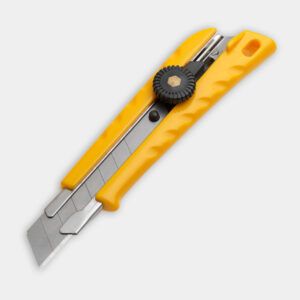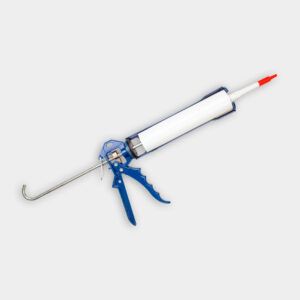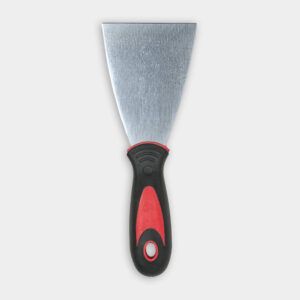Project details
Skill
Cost
Estimated Time
*Costs in this article sourced from Angi.
Replacing a broken windowpane is a manageable DIY project that can save you money and improve your home’s energy efficiency. With the right tools and techniques, you can restore your window to its former glory in just a few hours.
In the video above, This Old House general contractor, Tom Silva, demonstrates the process of replacing a single-pane basement window.
Understanding Window Anatomy
Before diving into the replacement process, it’s essential to familiarize yourself with the basic components of a window:
- Glazing compound: Putty that seals the glass to the frame
- Jamb: The vertical sides and top of the window frame
- Lights: Individual panes of glass within the window
- Muntins: Wooden strips that divide and hold the glass panes
- Sash: The movable part of the window that holds the glass
- Sill: The horizontal bottom part of the window frame
Window Tools and Materials Needed
Gathering the right tools and materials is crucial for a successful windowpane replacement. Here’s what you’ll need:
- Caulk gun
- Cutting oil
- Dust mask
- Glass cutter
- Glazing points
- HEPA vacuum
- Latex glazing compound
- Putty knife
- Replacement glass
- Safety glasses
- Tape measure
- Utility knife
- Work gloves
You can find most of these items at your local home improvement store. If you’re uncomfortable cutting glass yourself, many hardware stores offer custom cutting services.
Preparing for Windowpane Replacement
Preparation is key to a successful windowpane replacement. Before you begin, take these important steps:
- Remove the window sash from the frame, if possible. Doing so will make working on and handling the broken glass easier.
- Wear safety glasses, work gloves, and a dust mask to protect yourself from glass shards and potential lead dust.
- Set up a stable work surface in a well-ventilated area. A sturdy table or workbench will provide the support you need.
- Have a HEPA vacuum ready to clean up dust and debris as you work. Keeping your workspace clean reduces the risk of injury.
Removing the Broken Glass Windowpane
Safely removing any broken glass is the first step in the replacement process:
- Use a utility knife to cut through the old glazing compound around the broken pane, taking care not to damage the surrounding frame.
- Hold the HEPA vacuum close to the work area to capture dust, debris, and hazardous particles.
- Carefully pry out the broken glass pieces and dispose of them safely. To prevent injury, place the shards in a sturdy container.
- Remove any remaining glazing compound and glazing points with the putty knife. Ensure the frame is clean and smooth for the new glass.
By taking your time and using caution, you can remove the broken glass without causing additional damage to the window or frame.
Measuring and Cutting the New Window Glass
Accurate measurements are crucial for a proper fit:
- Measure the height and width of the window opening. We always recommend double-checking your measurements before cutting.
- For wood frames, subtract 1/16 inches from each measurement to allow for expansion. This small gap will accommodate changes in the wood due to temperature and humidity.
- Transfer these measurements to your replacement glass. Mark the glass accurately for a precise cut.
- If cutting the glass yourself, use a glass cutter dipped in cutting oil to score along the measured lines. The cutting oil helps create a smooth scoreline.
- Place the scored glass over the edge of your work surface and apply gentle pressure to snap it cleanly along the score line. Ensure the break is even and smooth.
As you’ll notice in the video, Silva shows us how to make a clean cut with minimal effort.
Installing the New Windowpane
With your new glass cut to size, you’re ready to install it:
- Apply a bead of latex glazing compound around the perimeter of the window opening. This compound will hold the glass in place and create a weather-tight seal.
- Carefully place the new glass into the frame, pressing it gently into the glazing compound. Make sure the glass is seated evenly in the frame.
- Insert glazing points around the edges of the glass to hold it in place. Use a putty knife to push them into the wood frame. Space the points evenly for secure support.
- Apply a second bead of glazing compound on top of the glass, angling it to create a seal between the glass and the muntins. This step ensures a secure and weather-tight fit.
- Use the putty knife to smooth out the glazing compound, creating a neat, angled surface. This effect will ensure the compound sets nicely and enhance the window’s appearance.
Window Finishing Touches
To complete the replacement process:
- Allow the glazing compound to dry for 3–4 days.
- Once dry, use a razor blade to clean up any excess glazing compound around the edges. This step will create a clean, finished look.
- Prime and paint the glazing compound and surrounding wood to match the rest of the window. This step enhances the appearance and protects the compound from weathering.
Silva suggests temporarily reinstalling the sash while the glazing compound dries to maintain security and prevent drafts. These finishing touches will ensure your window looks great and performs well.
Considerations for Modern Windows
While the process described works well for single-pane windows, modern double- or triple-pane windows require a different approach:
- These windows typically have insulating glass units that you can’t repair piecemeal. Special consideration is needed to maintain their integrity and efficiency.
- If a pane in a modern window breaks, you’ll need to replace the entire sash or insulating glass unit. This can be more complex and may require professional assistance.
- Contact the window manufacturer with your window’s dimensions to order a replacement unit.
- Installation of these units often involves screwing or attaching the new unit to the existing frame. Follow the manufacturer’s instructions for the best results.
This replacement process is generally more expensive than single-pane repairs but is necessary to maintain the window’s energy efficiency.
Window Maintenance Tips
To prolong the life of your windows and prevent future breakages:
- Address any issues with the frame or sash promptly to maintain structural integrity. Proper maintenance extends the life of your windows and enhances energy efficiency.
- Clean windows and frames gently to avoid putting pressure on the glass. Use soft cloths and mild cleaners.
- Ensure proper operation of moving parts to prevent stress on the glass. Lubricate hinges and tracks as needed.
- Regularly inspect windows for signs of wear or damage. Addressing issues early can prevent more significant problems.
By following these maintenance tips, you can keep your windows in good condition and reduce the likelihood of needing future repairs.
Our Conclusion
As Tom demonstrated, you can successfully replace single-pane windows with the right tools and techniques. For modern multi-pane windows, professional assistance may be necessary to ensure proper installation and maintain energy performance.
Whether handling a simple repair or considering updates for modern windows, understanding the process and following expert guidance will help you achieve the best results.




